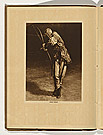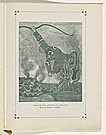Danses Polovtsiennes du Prince Igor [The Polovtsian Dancers from Prince Igor]
Polovtsian scene and dances
- Producer: Les Ballets Russes de Serge Diaghilev
- Premiere: 19 May 1909, Théâtre du Châtelet, Paris
- Costume design: Nicholas Roerich
- Scenery design: Nicholas Roerich
- Music: Alexander Borodin (completed and orchestrated by
Nikolai Rimsky-Korsakov and Alexander Glazunov) - Choreography: Michel Fokine
- Libretto: Alexander Borodin, after a scenario by Vladimir Stasov
- Main characters: Igor Prince of Novgorod-Seversk, Vladimir, Polovtsian warriors, Polovtsian girls, Polovtsian boys, Oriental slave women
The ballet consists of a series of dances taken from the second act of Alexander Borodin’s opera Prince Igor, based on a historical Russian epic. The ballet is set in the encampment of Khan Kontchak, leader of the twelfth-century Polovtsian army, following his capture of Igor Prince of Novgorod-Seversk, and his son Vladimir. Khontchakovna, Khan Kontchak’s daughter, visits Vladimir at nightfall, but their tryst is interrupted by the magnanimous and hospitable chief, who calls for his warriors to entertain the royal party with a banquet and energetic, traditional dances.
While Le Pavillon d’Armide paid homage to France’s ancien regime, the Danses polovtsiennes transported the Ballets Russes’ first-night audience to awilder world of Russian history set in the steppes of Central Asia. Roerich’s interest in Russian folk art and nomadic tribal history resulted in his glowering and dusty sets evoking the smokiness of the Polovtsi’s evening campsite, while his costumes for both male and female dancers presented a kaleidoscopic combination of traditional Central Asian folk dress patterns and shapes. Mauve, red, orange and green silk and cotton woven coloured-warp ikat textiles and braids were sourced from contemporary southern Russian nomadic tribal traders at markets in St Petersburg and made up into vibrantly patterned costumes that echoed the cultural interaction of the story, the ethnic diversity of the dancers and the savage rhythms of Borodin’s score.



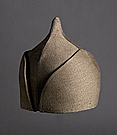
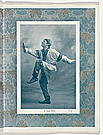

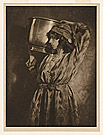
![Nicholas ROERICH | Adolf Bolm in Prince Igor [Danses Polovtsiennes du Prince Igor] | 1916](images/sml/199630.jpg)

